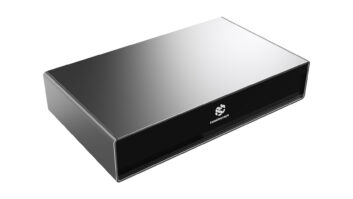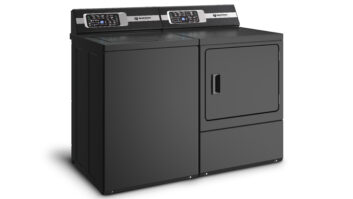ATLANTA
— Pioneer came to the CEDIA Expo
with its first 3D Blu-ray players, an Android app
and some positive words about its growing
share of the A/V receiver market.
The Blu-ray players are the BDP-430 and the
Elite series BDP-41FD and BDP-43FD. All feature
PC networking that was lacking in the models
they will replace.
The new DLNA
1.5-certified models
stream audio, video
and pictures from
a networked PC or
network-attached
storage (NAS) drive.
The new models
also expand the selection
of Internet
streaming services
accessible over a
home network, adding
Pandora and another soon-to-be-announced
music service. The services will join the Netflix
and YouTube services accessible on the players
that will be replaced.
All three new models will also feature optional
Wi-Fi 802.11 b/g/n dongle to connect to a Wi-Fi
network, and they’ll feature an HD GUI.
The trio will ship in late November or early
December at prices that will be the same or
less than their predecessors, which were MAPpriced
at $299, $399 and $499, said Chris
Walker, director of product planning and marketing.
Going forward, all new Pioneer Blu-ray players
will be 3D, he added.
To control the players and Pioneer A/V receivers
(AVRs), the company is developing
an app that will enable Android-based smartphones
to control all Pioneer Blu-ray and AVR functions via
Wi-Fi, effectively replacing the IR remotes that come with
the Pioneer devices. The Android app, said to be due soon,
also displays a menu of a networked PC’s audio, video and
digital-imaging content. Via the phones’ DLNA-server capability,
consumers will also be able to push PC content from
the PC to the Blu-ray player.
Pioneer already offers an iPod/iPhone app that controls
a limited number of Pioneer functions,
and a planned upgrade will
enable the app to view a menu
of content in a networked PC’s
iTunes application. Apple’s iPods
and iPhones, however, don’t support
DLNA server capability, Pioneer
said.
On business topics, home entertainment
division VP Russ Johnston
said the company’s AVR unit share
shot up to a strong No. 2 beginning
April 2009 from monthly
shares that fluctuated among third,
fourth and fifth place. Johnston cited the expansion of frontpanel
iPod/iPhone-controlling USB ports in every AVR from
$299 and higher, making the purchase of $100 docks unnecessary.
The USB ports access an iPod/iPhone’s PCM
outputs, and they stream composite video from a connected
iPod. An iPod-to-USB cable is included with the AVRs.
Pioneer increased its AVR business “significantly” without
expanding the company’s distribution base, Johnston
said.
Pioneer AVR sales are also up this year because of renewed
growth in the AVR market, whose unit sell-through
for each of the past six months has been running 6 percent
12 percent over last year, he said. The industry is up because
3D-capable HDMI 1.4a inputs and outputs are giving
dealers “a reason to present an AVR,” he said.
Recent AVR market growth marks the first time in three
years that AVR sales have grown year over year, Johnston
noted.













